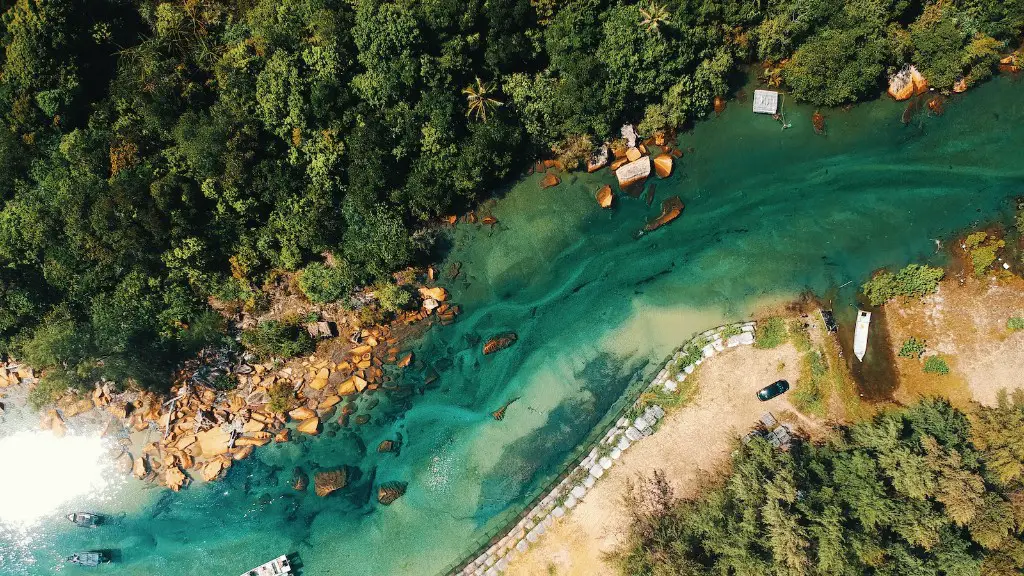History
The Mississippi River has been home to a variety of wildlife for centuries. Native Americans were the first to settle along the riverbanks in the region thousands of years ago. As the population of settlers grew, the number of animals living in and around the Mississippi River began to decline. Deforestation, damming, and agricultural development further impacted animal populations in the area. Despite these changes, the river remains an important habitat today, with many species of birds, mammals, reptiles, amphibians, and fish living in and around it.
Fish
Fish are an important part of the aquatic environment in the Mississippi River. Catfish, carp, bass, and sunfish are some of the most commonly seen fish in the river. River sturgeon, formerly common in the area, are making a slow but steady comeback since the introduction of conservation measures. Freshwater drum, American eels, and paddlefish are also found in the river. For commercial fishing, paddlefish and catfish are the most sought-after species.
Mammals
There are a number of mammals that make their homes in and around the Mississippi River. Muskrats, beavers, raccoons, and mink are some of the most commonly seen small mammals, while otters, white-tailed deer, and bobcats are also found in the area. Although they are not native to the area, feral pigs are now a common sight near the river.
Reptiles and Amphibians
The Mississippi River is home to a variety of lizards, turtles, and frogs. Common snapping turtles, painted turtles, and northern leopard frogs are the most commonly seen amphibians and reptiles in the area. In addition, more rare species, such as the threatened bog turtle, can be found in the area.
Birds
The Mississippi River is also an important home for various birds. In the spring, the river is full of migrating waterfowl including ducks, geese, and swans. Other common birds in the area include various types of gulls, double-crested cormorants, pelicans, and bald eagles. In addition, a variety of songbirds, such as warblers, cardinals, and woodpeckers, can also be found near the river throughout the year.
Benefits to Human Communities
The presence of animals in and around the Mississippi River is beneficial to human communities. Fish are an important food source for many residents of the area and have also been harvested for commercial sale. In addition, the waterfowl and shorebirds in the region eat a variety of insects, including pests that can damage crops. Furthermore, the presence of bald eagles and other raptors helps to control rodent populations in the area.
Conservation Challenges
Conservation of the wildlife in the Mississippi River region is a major challenge. Pollution, increased recreational activities, overfishing, and development all contribute to decreased animal populations and degraded habitat. In addition, invasive species such as Asian carp have a serious detrimental impact on the area’s ecosystems. In order to protect and restore wildlife in the region, it is important to take action to reduce these threats.
Grassroots Efforts
Despite the challenges to conservation, there have been many successful efforts to protect and preserve the wildlife of the Mississippi River. Local communities have undertaken many grassroots initiatives to protect habitats, restore native animal populations, and monitor human disturbances. Furthermore, state and federal agencies have enacted legislation to further protect the river’s wildlife.
Community Involvement
Community involvement is essential for the conservation of wildlife in the Mississippi River region. Residents can help preserve wildlife in the area by reducing their environmental impact, supporting efforts towards conservation, and educating others about these issues. By participating in these efforts, communities can ensure that the Mississippi River remains an important home to its diverse wildlife.
Protection of the Environment
The protection of the environment is key to preserving the wildlife of the Mississippi River region. Reducing pollution, restoring damaged habitats, and minimizing the human impact on the river are all important. In addition, it is essential to regulate commercial and recreational activities in the region, in order to protect the area’s wildlife. Through these actions, we can ensure that the Mississippi River remains an important habitat for its diverse wildlife.
Building Capacity
Conservation efforts in the Mississippi River region can also be improved by building capacity at both the local and regional level. Supporting grassroots conservation initiatives, providing education and training opportunities, and engaging other stakeholders are all essential for building the capacity needed to protect the area’s wildlife. In addition, increasing the participation of local communities in conservation efforts can help ensure the long-term health of the Mississippi River’s wildlife.
Conclusion
The Mississippi River is an important habitat for a variety of wildlife. Despite threats from pollution, development, and invasive species, conservation efforts have been successful in restoring animal populations and protecting the environment. Through grassroots initiatives, community involvement, and increased capacity, we can ensure that the Mississippi River remains an important habitat for its diverse wildlife for many years to come.



